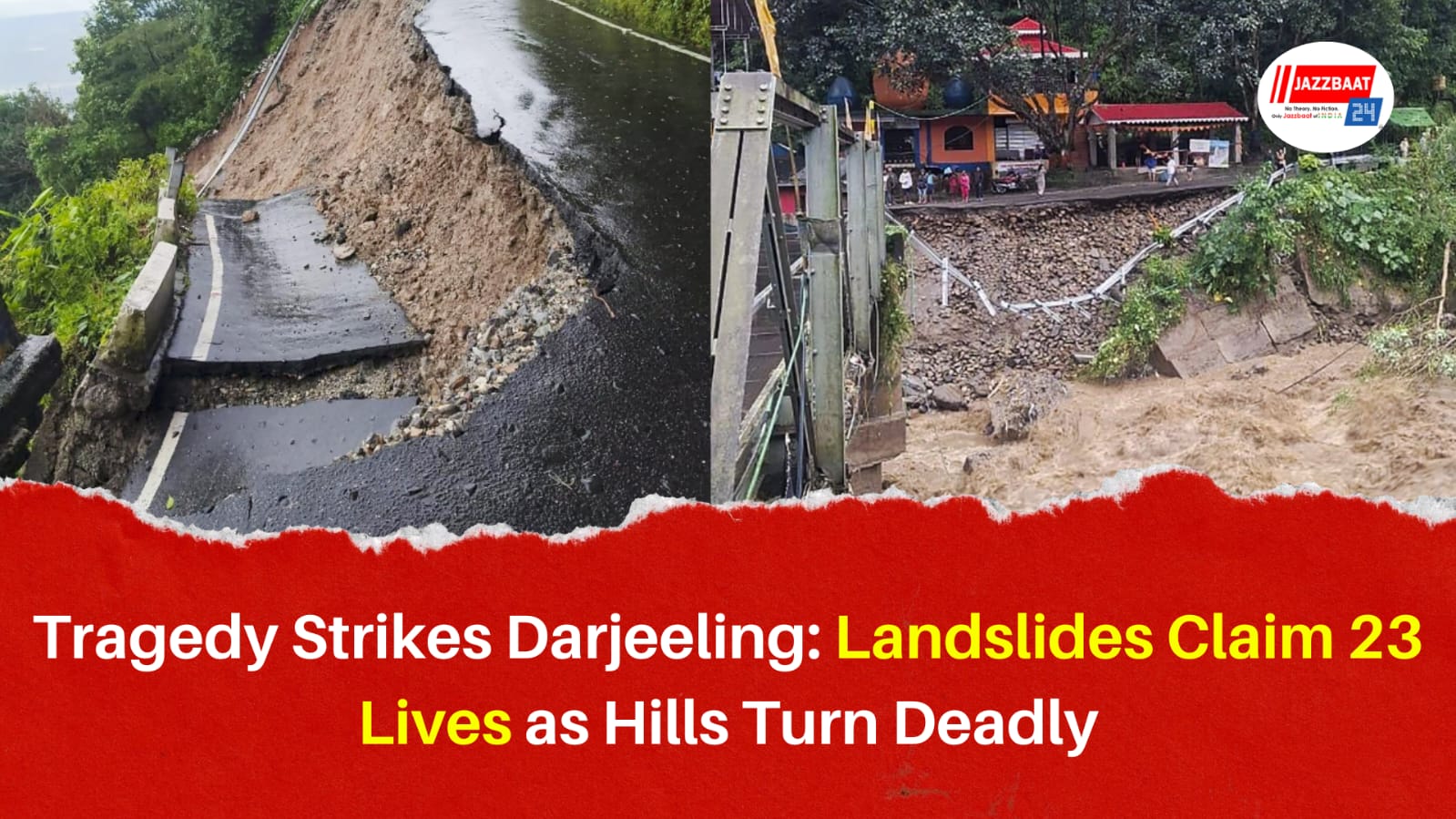
The picturesque hills of Darjeeling turned into a scene of devastation on Sunday as relentless rainfall triggered one of the worst landslides the region has witnessed in a decade. At least 23 people, including children, have lost their lives, with many others injured and hundreds of tourists stranded.
What began as a festive Durga Puja holiday for families visiting the "Queen of the Hills" quickly descended into chaos. Entire villages found themselves cut off from the rest of the world as hillsides gave way, sweeping houses into the valleys below and burying roads under thick layers of mud.
Mirik, a popular tourist destination, bore the brunt of nature's fury with 11 deaths reported from the area alone. Seven more lives were lost across other subdivisions of Darjeeling district, while five bodies were recovered from debris in Nagrakata, Jalpaiguri. The National Disaster Response Force has reported landslides at 35 locations across the region.
"The situation is alarming," said North Bengal development minister Udayan Guha earlier in the day. That assessment proved painfully accurate as rescue teams worked through the day to reach affected areas. The collapsed Dudhia Iron Bridge over the Balason River has severed a crucial link between Siliguri and the Mirik-Darjeeling route, complicating rescue efforts.
For tourists who came seeking the cool mountain air and stunning vistas, the holiday has become a nightmare. Families from Kolkata, Howrah, and Hooghly remain trapped in their hotels, unable to leave as roads remain blocked and communication networks have been knocked out in several areas.
The disaster has been brewing since Saturday night when heavy rains began pounding the region. Over 300 mm of rainfall was recorded in just 12 hours, according to Chief Minister Mamata Banerjee. She explained that excessive rainfall in Bhutan caused water to overflow into North Bengal, overwhelming the region's capacity to handle the deluge.
"This disaster is unfortunate. Natural calamities are beyond our control," Banerjee said after chairing an emergency meeting. She announced plans to personally visit North Bengal on Monday to assess the damage firsthand.
Prime Minister Narendra Modi expressed his condolences on social media, assuring that the central government is closely monitoring the situation. The India Meteorological Department has issued a red alert for the region, warning that saturated soil could trigger more landslides.
This tragedy evokes painful memories of 2015, when nearly 40 people perished in similar circumstances. Officials fear the current death toll may rise as rescue operations continue and more remote areas are accessed.
As darkness falls over the hills, the focus remains on rescue and relief. But for the families who have lost loved ones and the communities torn apart by mud and debris, the recovery will take far longer than the rains took to destroy what they built over generations.
The mountains that draw thousands with their beauty have shown their terrible power, reminding us once again that nature demands respect, not just admiration.